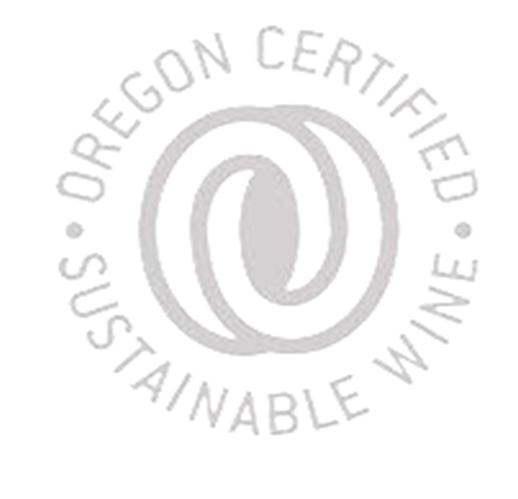 “You guys are all so green, why not just call yourselves “Oregreen” or “Oregonic?”” This was the sentiment often heard during the Bugs, Weeds and Pinot Noir session at Oregon Pinot Camp. For the past ten years, 50 Oregon wineries have joined together to host sommeliers, wine stewards and other wine buyers in the heart of the Willamette Valley. During this highly coveted, invite-only event, wineries educate attendees about all aspects of wine growing and wine making in Oregon. The session about sustainability is always especially fascinating to wine buyers.
“You guys are all so green, why not just call yourselves “Oregreen” or “Oregonic?”” This was the sentiment often heard during the Bugs, Weeds and Pinot Noir session at Oregon Pinot Camp. For the past ten years, 50 Oregon wineries have joined together to host sommeliers, wine stewards and other wine buyers in the heart of the Willamette Valley. During this highly coveted, invite-only event, wineries educate attendees about all aspects of wine growing and wine making in Oregon. The session about sustainability is always especially fascinating to wine buyers.
“We tried to talk about Oregon’s sustainability programs in many different ways over the years, but the end results were always very similar. The buyers were fully convinced that the growers and winemakers are committed to sustainable practices and that they were doing it for the right reasons. However, you could just watch their heads begin to spin as we were explaining the nuances of Low Input Viticulture and Enology vs. Demeter Biodynamic vs. USDA Organic vs. Food Alliance,” explained Pat Dudley, former chair of Oregon Pinot Camp. “We heard the feedback time and time again that the program differences were not important to them. They fully understood that the industry is continually moving toward true sustainability, and that the methods for getting there were all more similar than different. They urged us to find a way to unify the program so that they could succinctly communicate it to their consumers. This was the genesis of Oregon Certified Sustainable Wine®.”
While the concept of creating a unifying program was simple, the process was much more challenging. There were quite a number of decisions to be made: which certifiers would be included; who would administer the program; could it just be a marketing program or would a new certification have to be created; would it apply to products other than wine; could it be expanded to other states; what would the program be called; and what would the requirements be?
The Oregon Wine Board’s board of directors took the lead on answering these questions. Once it was determined that the Oregon Wine Board had the legislative mandate to own the program many of the other questions were determined by laws and regulations. Because the intention was to create a marketing program with a distinctive logo that could be placed on the back label of a wine bottle, it could not simply be a general marketing program; it needed to be a certification program. And, because the name “Certified Sustainable” was too descriptive to be trademarked, a geographic indicator was incorporated, which necessitated that the grapes in the wine be 100% grown in Oregon.
The branding first created was for a program called “Oregon Certified Sustainable.” The Oregon Wine Board’s vision was that it would begin with the wine industry, but then expand to other products, likely administered by an independent organization. While in the process of working with the Oregon Department of Justice (DOJ) to develop the certification program standards, the Oregon Wine Board was notified that the Oregon Department of Agriculture was also working with DOJ to create a sustainable certification program. After many months of negotiations, DOJ filed the USPTO application on behalf of the state of Oregon, for Oregon Certified Sustainable Wine, leaving the door open for the Department of Agriculture to create “Oregon Certified Sustainable X“ programs for other commodities.
The program standards and the online application process were finalized in late 2008 and launched to the Oregon Wine industry. Wines can qualify to carry the Oregon Certified Sustainable Wine® (OCSW) logo if:
- 97% of fruit in the bottle comes from vineyards certified by LIVE, USDA Organic, Demeter Biodynamic®, and/or Food Alliance; AND
- The wine is produced in a facility certified by LIVE, USDA Organic, Demeter Biodynamic®, or Food Alliance.
All of the grapes must be grown in Oregon, but the wine can be produced in a cross-state certified facility, as long as that facility is located within an American Viticultural Area which has boundaries that extend into Oregon (i.e. Walla Walla Valley, Columbia Valley, Snake River Valley and Columbia Gorge).
The Oregon Wine Board charges $.01 for each bottle certified. These fees are used for marketing, public relations, trademark registration and trademark protection. The word mark and the logo are registered in the US. A trademark registration application is pending in Canada. The next applications will be submitted in Hong Kong and China in the coming year.
To date, 20 Oregon producers have over 200 OCSW wines, totaling nearly 2 million bottles. Though the program is very new, there has been quite a bit of buzz about it in the media. As more and more wines are released into the marketplace, consumers will become increasingly aware of them. They will see the logo on the bottle and they will hear about the program from their favorite sommelier, wine steward or retailer because at the 2010 Oregon Pinot Camp, the vision of “Oregreen” will finally be a reality.
For more details about the program, please visit http://www.oscw.org and http://industry.oregonwine.org/oregon-wine-board/
Hannelore Buckenmeyer is a Senior Project Director at the Oregon Wine Board.
Return to top.

